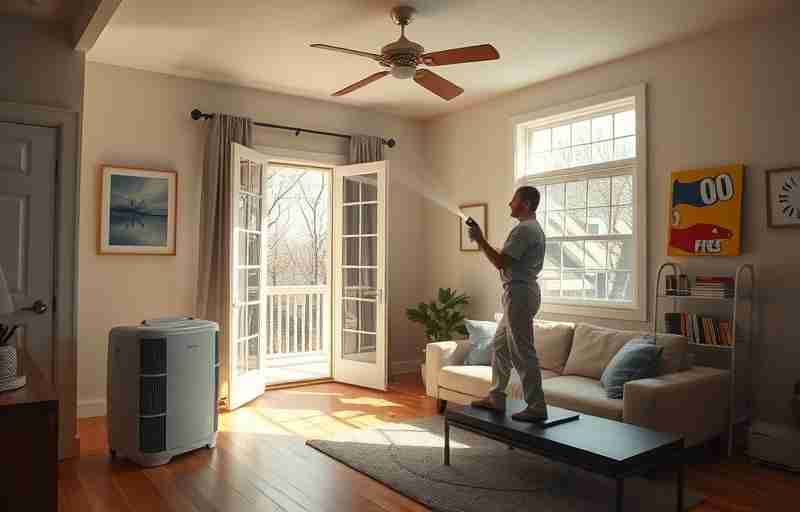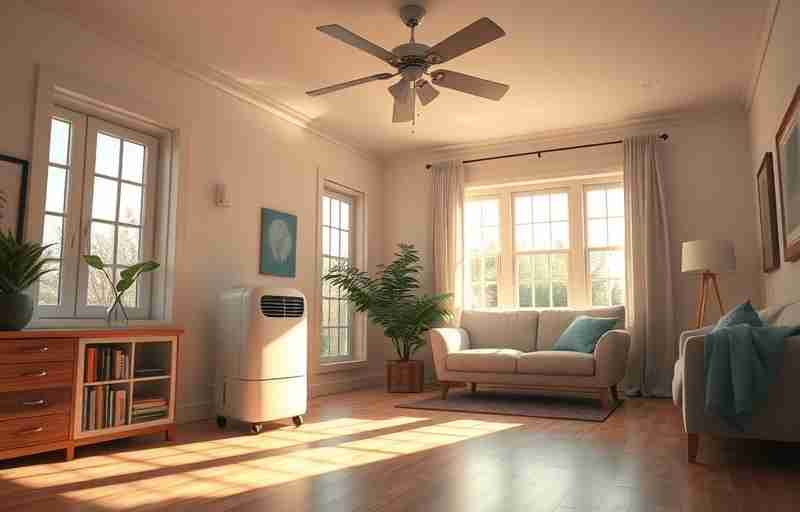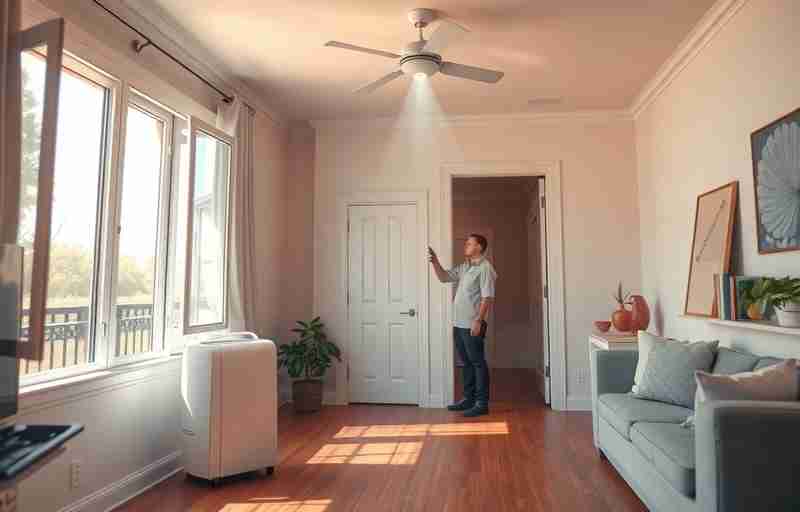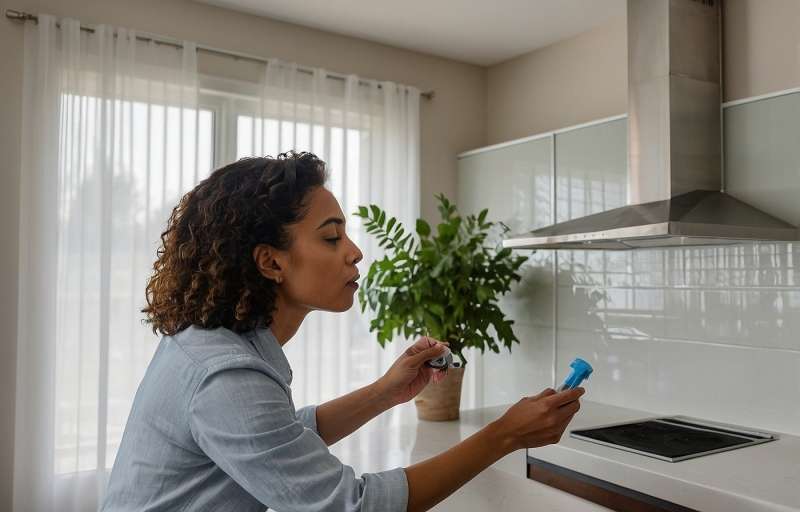Seasonal rental homes are a great source of income and relaxation, but they can also be vulnerable to mold growth if not properly maintained. Knowing how to prevent mold in seasonal rental homes is essential for protecting your property, ensuring guest satisfaction, and avoiding costly repairs. Mold thrives in damp, humid environments, making vacation homes—especially those left unoccupied for long periods—prime targets for infestation. By taking proactive steps such as controlling indoor humidity, ensuring proper ventilation, and addressing water damage promptly, you can keep your rental property mold-free year-round.
At COMMITTED TO QUALITY SERVICE, we understand the importance of maintaining a healthy living environment. Our team offers fast, friendly, and professional service to help you tackle water damage before it leads to mold problems. Whether you need water damage restoration or fire damage recovery, we use specialized equipment to restore your property quickly and efficiently. Call us now at 855-933-7935 to learn more about how we can help protect your seasonal rental home from mold and other hazards.
Understand the Causes of Mold Growth

Mold thrives in environments where moisture, warmth, and organic material are present—conditions often found in seasonal rental homes that remain unoccupied for extended periods. Understanding what causes mold growth is essential to effectively preventing it and maintaining a safe, healthy living space for guests.
The primary contributors to mold development include:
- Humidity and Poor Ventilation: When air circulation is limited, especially in bathrooms, basements, or attics, moisture accumulates, creating an ideal breeding ground for mold.
- Water Leaks: Undetected leaks from roofs, pipes, or appliances can lead to persistent dampness. According to the Environmental Protection Agency (EPA), mold can begin growing within 24-48 hours of water exposure.
- Condensation: Cold surfaces like windows and metal pipes can cause condensation, which contributes to moisture buildup indoors.
- Flooding or Water Damage: Seasonal homes affected by storms or plumbing issues are at high risk. Learn how to spot early signs of damage by visiting our guide on hidden water damage.
“Mold spores are everywhere, but they only become a problem when they find the right conditions to grow,” notes the Centers for Disease Control and Prevention (CDC).
To mitigate these risks, regular inspections and proper maintenance are crucial. Our professional mold remediation services are designed to identify and eliminate mold at its source.
For more tips on protecting your property, explore our blog or learn about our full range of services. You can also refer to the EPA’s mold resources at https://www.epa.gov/mold for additional guidance.
Maintain Proper Ventilation

Ensuring adequate airflow is one of the most effective ways to prevent mold growth in seasonal rental homes. Mold thrives in damp, stagnant environments, making proper ventilation essential for maintaining a healthy indoor atmosphere. When a property is closed up for long periods, moisture can accumulate, especially in bathrooms, kitchens, basements, and attics. Installing exhaust fans in high-humidity areas and using dehumidifiers can significantly reduce moisture levels. Additionally, opening windows periodically or using air circulation systems helps keep the air fresh and dry.
Seasonal rental homeowners should also inspect and maintain HVAC systems regularly to ensure they are functioning efficiently. Dirty filters and blocked vents can hinder airflow and contribute to mold development. If you’re unsure about the condition of your ventilation system, consider scheduling a professional inspection. You can learn more about our expert services designed to protect your property from mold and moisture-related issues.
For homes that have already experienced water damage, it’s crucial to address the issue immediately to prevent mold from taking hold. Visit our detailed guide on how to identify hidden water damage early to stay proactive. By maintaining proper ventilation and taking preventive steps, you can ensure your seasonal rental remains safe, clean, and mold-free for every guest.
Control Indoor Humidity Levels
Maintaining proper indoor humidity levels is essential to prevent mold growth in seasonal rental homes. Mold thrives in damp environments, and when humidity levels rise above 60%, it creates the perfect conditions for spores to develop and spread. To keep your rental property mold-free, aim to maintain indoor humidity between 30% and 50%. This can be achieved by using dehumidifiers, especially in basements, bathrooms, and other moisture-prone areas. Additionally, ensure that the property is well-ventilated by using exhaust fans and opening windows when weather permits.
Regularly inspecting your HVAC system and replacing filters can also help control humidity and improve air quality. If your rental home is located in a particularly humid region, consider installing a whole-house dehumidifier for more consistent control. It’s also important to check for signs of hidden moisture, such as condensation on windows or musty odors, which could indicate a larger issue. Learn more about identifying early signs of water damage by visiting our guide on hidden water damage.
For professional help in managing moisture and preventing mold, explore our comprehensive services. Our team is experienced in mold prevention and remediation, ensuring your seasonal rental remains safe and healthy for guests year-round. For more insights and expert tips, check out our informative blog.
Inspect and Repair Leaks Promptly

One of the most effective ways to prevent mold in seasonal rental homes is by addressing water leaks as soon as they occur. Even minor leaks from pipes, roofs, or windows can create the perfect environment for mold growth if left unattended. Moisture accumulation, especially in hidden areas like behind walls or under flooring, can go unnoticed for weeks or months, leading to costly damage and potential health risks for tenants.
Regular inspections are essential, particularly before and after each rental season. Check plumbing fixtures, ceilings, basements, and attics for any signs of water intrusion. If you detect any damp spots, discoloration, or musty odors, act immediately. Hiring professionals for leak detection and repair can help ensure that no issue is overlooked. For more information on how to spot hidden moisture issues, visit our guide on how to identify hidden water damage early.
Timely repairs not only prevent mold but also preserve the structural integrity of your property. If mold has already developed, it’s crucial to seek expert help. Learn more about our specialized mold remediation services to restore your home safely and efficiently.
Being proactive with leak inspections and repairs is a key step in maintaining a healthy, mold-free environment in your seasonal rental property.
Use Mold-Resistant Materials
Choosing the right building materials is a crucial step in preventing mold growth in seasonal rental homes. Since these properties often remain unoccupied for extended periods, they are more susceptible to moisture buildup, which creates the perfect environment for mold. Opting for mold-resistant materials such as treated wood, mold-inhibiting drywall, and moisture-resistant insulation can significantly reduce the risk of mold infestation. These materials are designed to withstand damp conditions and inhibit the growth of mold spores, making them ideal for areas like bathrooms, kitchens, and basements.
In addition to construction materials, consider using mold-resistant paints and sealants on walls and ceilings. These coatings add an extra layer of protection by preventing moisture from penetrating surfaces. When renovating or building a seasonal rental, consult professionals who specialize in mold prevention to ensure the right materials are used throughout the property.
Regular maintenance and inspections are also essential. If you suspect hidden moisture issues, it’s wise to refer to resources like our guide on how to identify hidden water damage early. For more information on how we can help protect your property, explore our full range of services.
By investing in mold-resistant materials and staying proactive, you can maintain a healthier, safer environment for your guests and preserve the long-term value of your rental property.
Clean and Dry the Property Between Guests
To effectively prevent mold in seasonal rental homes, it’s essential to thoroughly clean and dry the property between guest stays. Mold thrives in damp, poorly ventilated environments, and even short-term moisture buildup can lead to long-term damage. After each guest checks out, inspect the property for any signs of water intrusion, such as leaks under sinks, damp towels left behind, or condensation on windows. Pay special attention to high-humidity areas like bathrooms, kitchens, and basements.
Use dehumidifiers and fans to ensure all surfaces are completely dry before the next guest arrives. Launder all linens and towels promptly, and clean surfaces with mold-inhibiting products. Additionally, check HVAC systems and air filters regularly to maintain proper airflow and reduce humidity levels.
If you suspect hidden moisture or previous water damage, consider scheduling a professional inspection. Our expert team offers comprehensive services to help identify and resolve potential issues before they escalate. For more information on spotting early signs of damage, visit our guide on how to identify hidden water damage early.
Maintaining a clean and dry environment not only protects your property but also ensures a safe and comfortable stay for your guests. Regular upkeep and prompt attention to moisture issues are key steps in mold prevention for any seasonal rental home.
Schedule Regular Property Inspections
Conducting routine inspections is essential for preventing mold growth in seasonal rental homes. These properties often remain unoccupied for extended periods, making them more susceptible to unnoticed water leaks, humidity buildup, and poor ventilation—all of which create ideal conditions for mold. By scheduling regular property checks, you can identify and address potential issues before they escalate into costly repairs.
During inspections, focus on areas prone to moisture, such as basements, bathrooms, kitchens, and around windows and doors. Look for signs of water damage, such as discoloration, peeling paint, or musty odors. If any issues are detected, prompt action can prevent mold from spreading and affecting the structural integrity of the home.
Hiring professionals for thorough inspections can be a smart investment. Experts can detect hidden problems and recommend effective solutions. Learn more about the importance of early detection by visiting our guide on how to identify hidden water damage early.
Incorporating inspections into your seasonal maintenance plan not only protects your property but also ensures a safe and healthy environment for your guests. For more details on our inspection and restoration offerings, explore our full range of services. If you have questions or need personalized advice, feel free to reach out through our contact page.
In conclusion, preventing mold in seasonal rental homes requires a proactive and consistent approach. By maintaining proper ventilation, controlling humidity levels, conducting regular inspections, and addressing water leaks promptly, property owners can significantly reduce the risk of mold growth. Additionally, educating tenants about mold prevention and setting clear maintenance expectations can go a long way in preserving the property’s condition. With these preventive measures in place, you can ensure a healthier, more comfortable environment for your guests and protect your investment for years to come.

